- Home
- TV History
- Network Studios History
- Cameras
- Archives
- Viewseum
- About / Comments
Skip to content
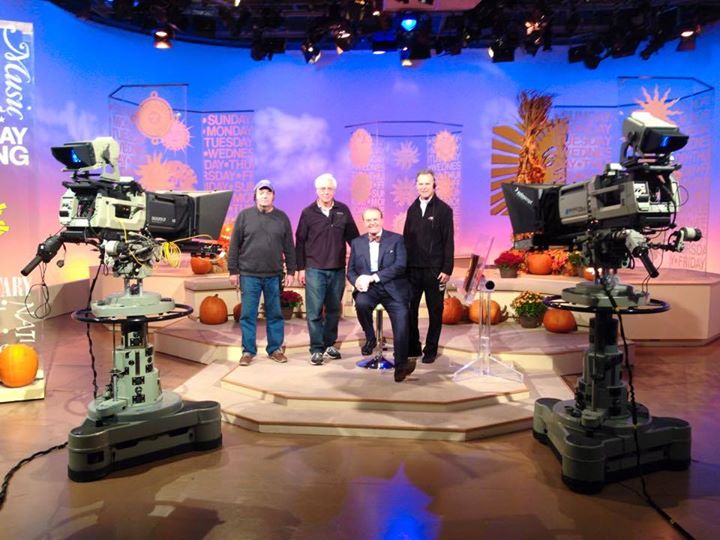

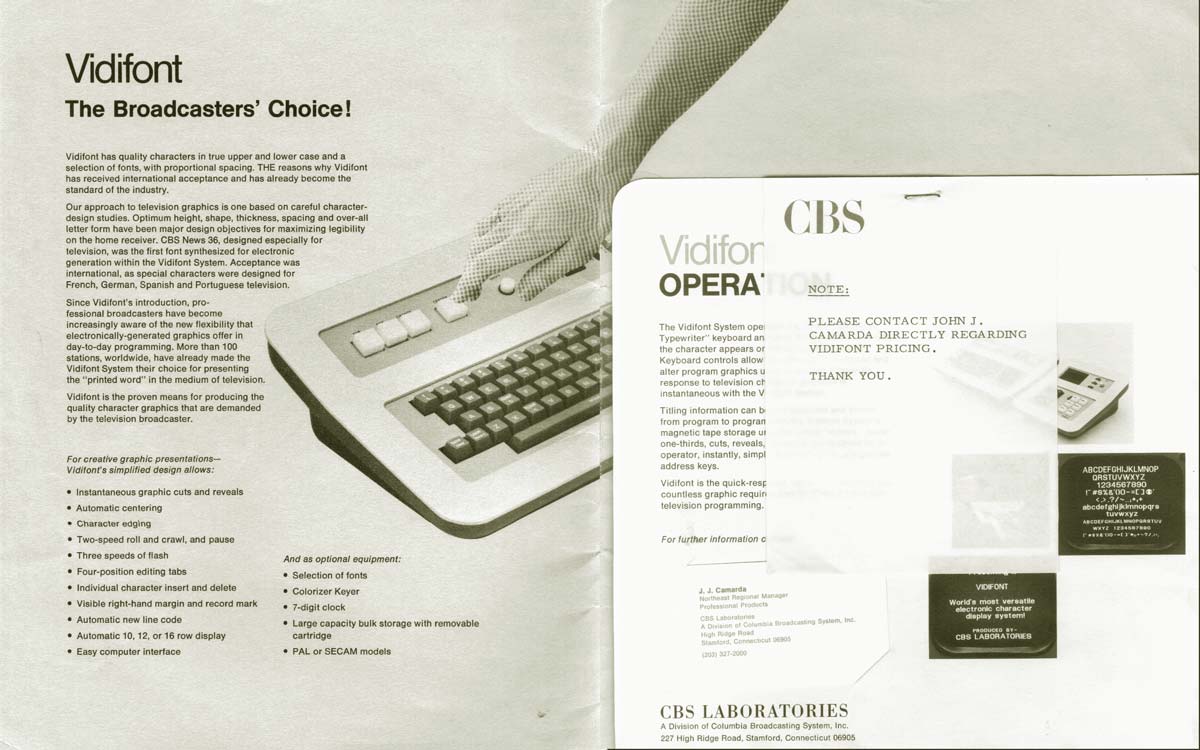

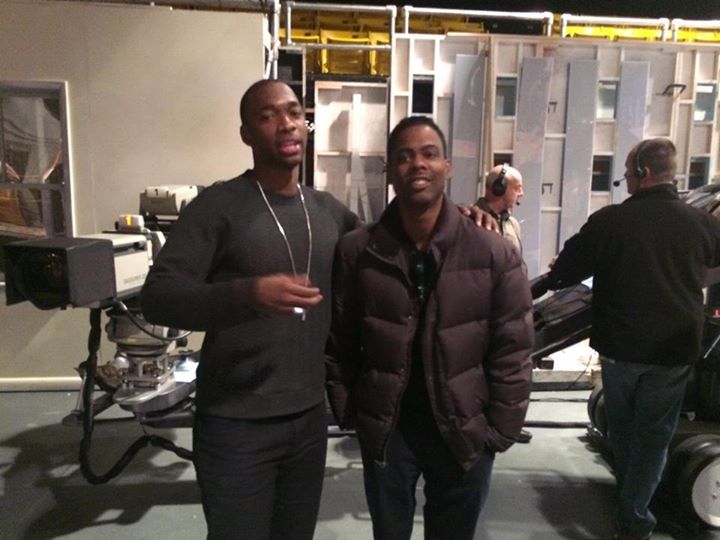

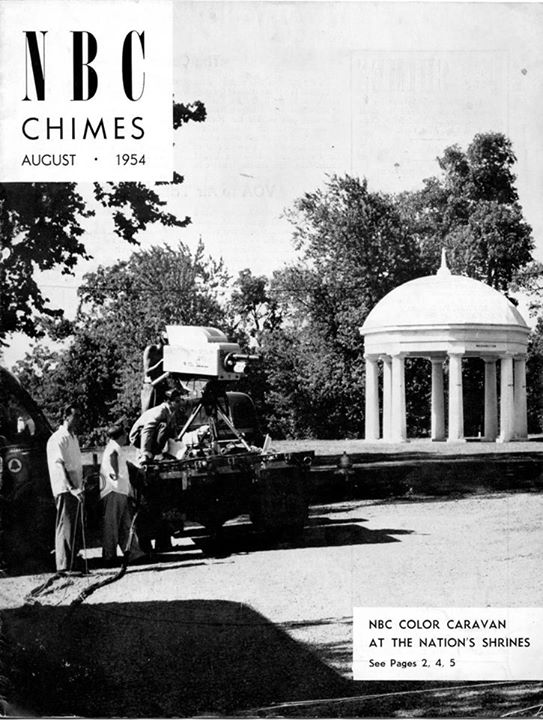

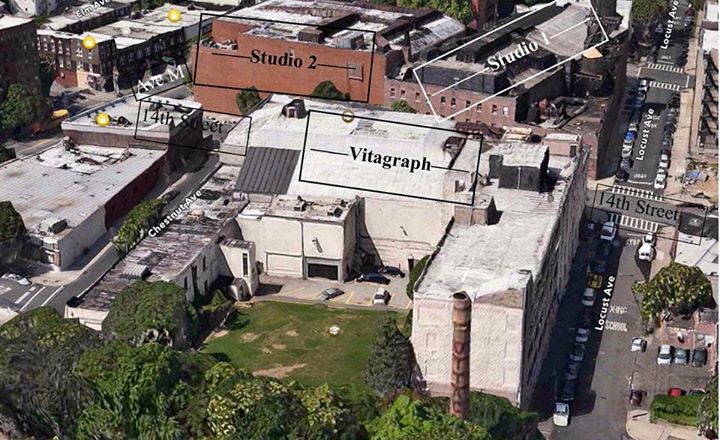

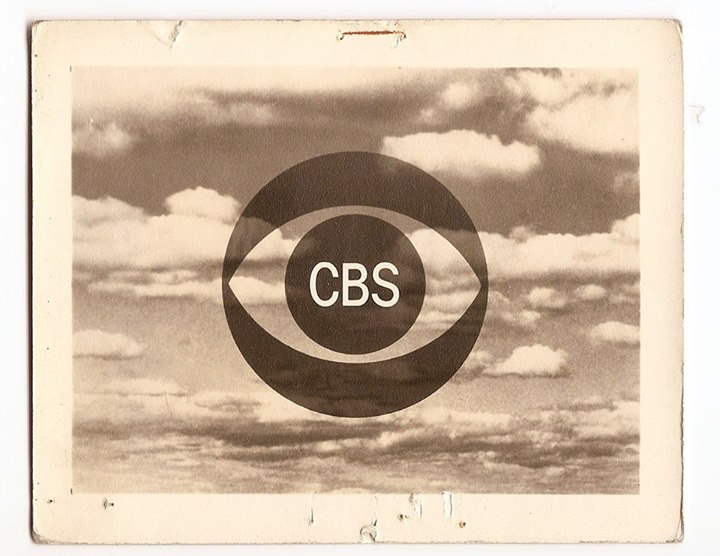





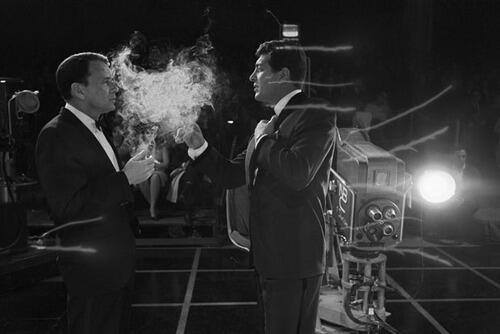

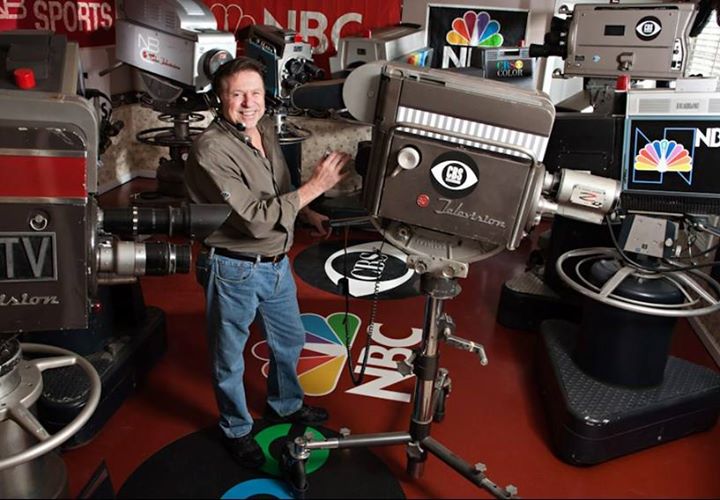

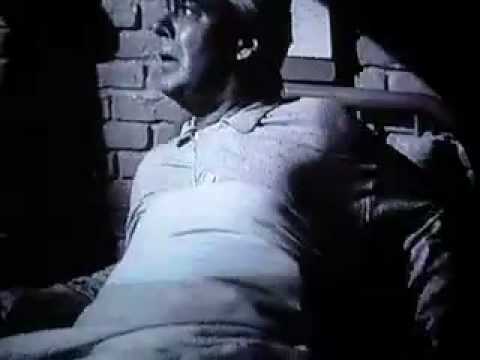



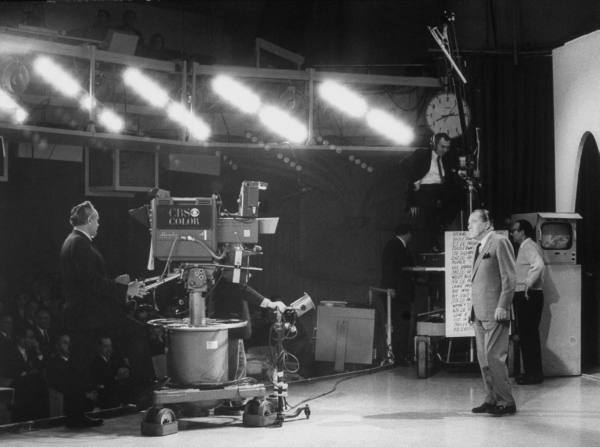

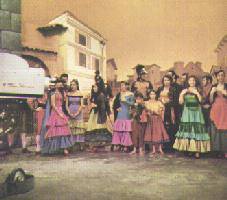

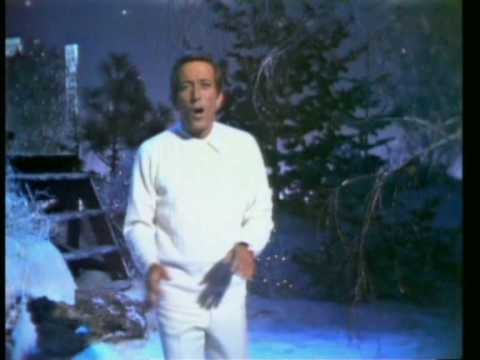

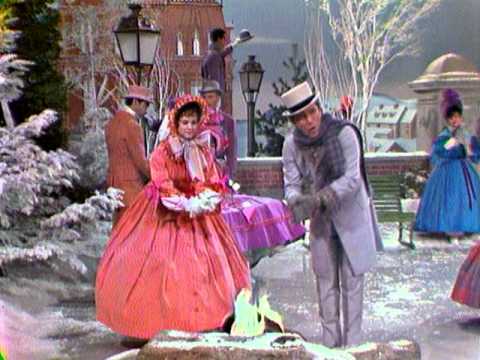

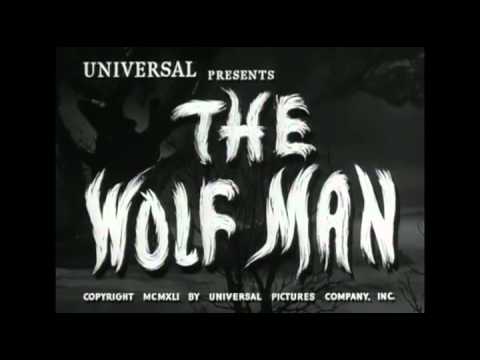

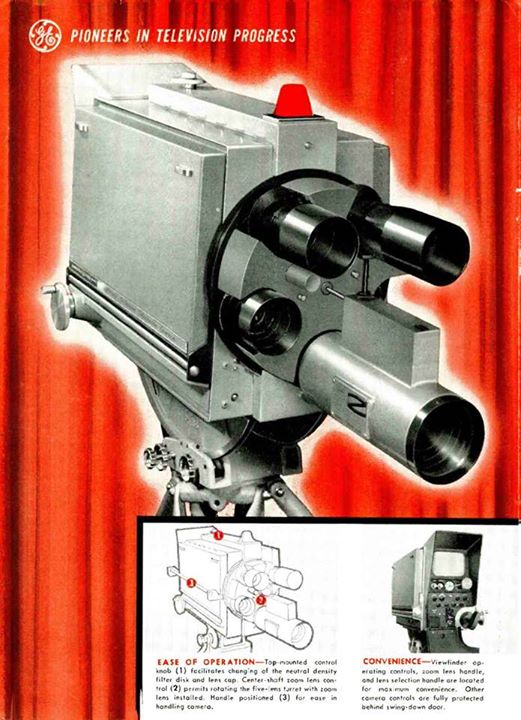

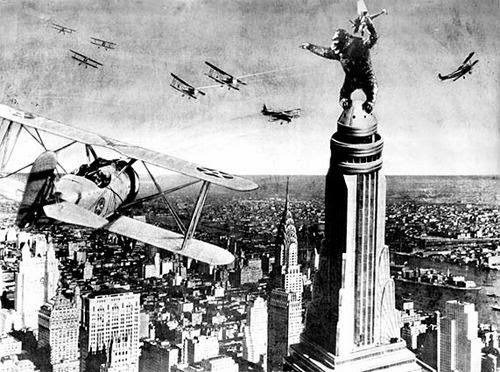

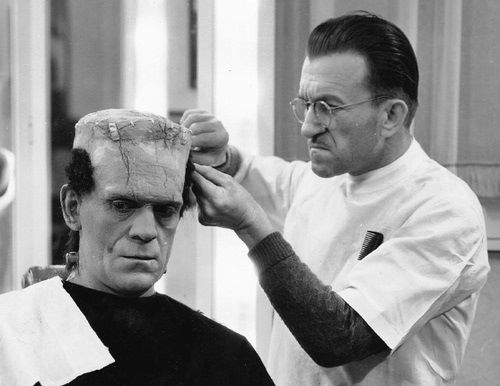

Posts in Category: TV History
Page 51 of 136
« Previous
1
2
3
4
5
6
7
8
9
10
11
12
13
14
15
16
17
18
19
20
21
22
23
24
25
26
27
28
29
30
31
32
33
34
35
36
37
38
39
40
41
42
43
44
45
46
47
48
49
50
51
52
53
54
55
56
57
58
59
60
61
62
63
64
65
66
67
68
69
70
71
72
73
74
75
76
77
78
79
80
81
82
83
84
85
86
87
88
89
90
91
92
93
94
95
96
97
98
99
100
101
102
103
104
105
106
107
108
109
110
111
112
113
114
115
116
117
118
119
120
121
122
123
124
125
126
127
128
129
130
131
132
133
134
135
136
Next » Meet The Cameramen Of ‘CBS Sunday Morning’
On November 3, 2014
- TV History
Meet The Cameramen Of ‘CBS Sunday Morning’
From left to right are Kevin Cavallini, Allen Brown and John Curtin shown here with the show’s great host, Charles Osgood. Every Sunday morning for 35 years, since day one in 1979, Allen Brown has been there and has been with CBS for 40 years.
Later today, I will be talking with not only Allen, but NBC veteran Frank Gaeta as well. I can’t wait to hear some of the stories about their years behind the camera and the shows they’ve done.
Also included here are some shots from yesterday’s show with a few more of the people that work in Studio 45 on Sunday mornings.
Thanks to our friend Craig Wilson for the always stellar photos. Enjoy and share! -Bobby Ellerbee


Homage to the Vidifont
On November 3, 2014
- TV History
In Case You Missed It…Another Look At The Vidifont System
On Saturday, I posted the first article on television’s first character generator, but here is a much more illustrated article on Vidifont that I think you’ll like. Thanks to James Shea for sharing this in the Comment section a day or so ago. By the way…if you are not paying attention to the Comments section of these posts, your are MISSING A LOT! That’s where most of the great detail comes in and in most cases, that rich flow of new information is typically from those that were there, and only they can add. I, and many others are forever grateful to the thousands of veteran broadcasters here that, in part, come here to pass along their experiences…it’s of benefit to us all. Enjoy, share and read the comments! -Bobby Ellerbee
He also details the economic considerations involved, where CBS basically determined they were spending so much money creating 35mm slides for namesupers (the hardware costs for the specialized camera itself were considerable) that they could easily recoup that and more by developing the Vidifont. I…
Seems Like Only Yesterday, And It WAS! SNL Rehearsal Shot
On November 2, 2014
- TV History
Seems Like Only Yesterday, And It WAS! SNL Rehearsal Shot
Here’s Chris Rock with Jay Pharoah between scenes yesterday in NBC Studio 8H. Last nights show was great, Rock and Prince rocked the house! That’s Louis Delli Paoli and Bob Mancari behind them on the Chapman Electra arm with John Pinto in the bucket and Phil Pernice at the wheel. The only crane team left in live television and the pride of Italy. Enjoy and share! -Bobby Ellerbee
1954; The Year In Color At NBC
On November 2, 2014
- TV History
On A Related Note…1954; The Year In Color At NBC
Just a month before NBC Brooklyn Studio I went live in September of 1954, the NBC Color Caravan wrapped up a three month sojourn through the midwest and mid Atlantic states, but that was just a small part of a year brimming with color at NBC and RCA. Here are the highlights of that industrious year.
January 1, 1954: ‘The Tournament of Roses Parade’, from Pasadena was telecast in color by twenty-one stations of NBC’s first coast-to-coast color network. This colorcast also marked the first use of NBC’s new mobile color TV unit and the first West-to-East transcontinental transmission of color television.
February 16, 1954: NBC transmitted the first newscast in color… ‘The Camel News Caravan’, including the first integration of 16-mm color film into a live program.
March 4, 1954: The first shipment of RCA TK40s, and associated studio equipment was made from RCA’s plant in Camden, N.J. This was after two years of testing of the TK40 prototypes at NBC’s Colonial Theater.
March 19, 1954: The first colorcast of a boxing match from Madison Square Garden, was presented by NBC and was their first color sports event.
March 25, 1954: Production of RCA’s first commercial color TV sets, the CT 100s, equipped with a 15-inch picture tube began at Bloomington, Indiana.
June 25, 1954: NBC made the first network transmission of 35-mm color film, on ‘The Mrs. USA’ program.
July 8 – Aug. 19: NBC aired the first network color series, ‘The Marriage’, a situation comedy with Jessica Tandy and Hume Cronyn.
July 15, 1954: RCA announced development of a new and improved 21-inch color kinescope with a picture area of 255 square inches.
September 12, 1954: NBC presented the first of its 90 minute color spectacular, ‘Satins and Spurs’. The program also inaugurated NBC’s new Brooklyn Studio I.
September 15, 1954: RCA demonstrated its new 21-inch color picture tube and a simplified color TV receiver.
Oct. 14 – Dec. 30: ‘The Ford Theatre’ was the first network sponsored TV color film series to be presented on a regular basis.
November 28,1954: First two-hour color production of a Shakespeare play, “Macbeth” on ‘Hallmark Hall of Fame’.
December 1, 1954: RCA began commercial production of color TV sets with a new 21-inch picture tube.
Presented with thanks to Ed Reitan and Novia.net for the detials and all his many contributions to the perservation of television history and his archival efforts, which are many. Enjoy and share! -Bobby Ellerbee
A Rare And Detailed Look At NBC’s Brooklyn Studios…Part 1 of 2
On November 2, 2014
- TV History
A Rare And Detailed Look At NBC’s Brooklyn Studios…Part 1 of 2
For me, these new photos and information have cleared up a lot of confusion about these famous and historic film and television studios. I hope they will do the same for you.
Here are two annotated aerial views of the property and the recently discovered September 29, 1951 article from the Brooklyn Eagle that announces the sale of the Warner Brothers – Vitagraph property to NBC.
I had always thought that NBC bought the entire Warner Brothers holdings in Brooklyn…the studios and property that WB had bought from Vitagraph Studios. This is not the case. As it turns out, the big white building was retained by WB, but they sold the property on the other side of 14th Street to NBC. This will not surprise you but Wikipedia and other wiki sites have a lot of wrong information on this.
The white Vitagraph building was built in 1906. Vitagraph was bought by Warner Brothers April 22, 1925. What we now know as NBC Brooklyn Studio 1 was built by WB in 1936 and was first used by NBC September 12, 1954. Studio II, the smaller studio was built new from the ground up by NBC and went into service in the fall of 1956.
All of this sheds new light on a bigger picture…a big color picture! As I compare notes on dates and locations, it is dawning on me that with the broadcast of ‘Satin And Spurs’ on September 12, 1954, NBC Brooklyn Studio I, became NBC’s second ever color facility. That is a fact I have never seen documented anywhere before, even in NBC’s press releases of the time.
It’s interesting to note that this property was bought about the same time RCA/NBC took over The Colonial Theater. That was NBC’s first real color facility and after transforming it from a movie theater to a color television studio, the first live broadcast was done from The Colonial on November 8, 1952 with a one time only broadcast of ‘Your Show Of Shows’ with the color burst removed, but viewed in color via closed at RCA Labs in Princeton.
I suspect the three year gap between when NBC bought the property and it’s first use was due in large part to a wait and see attitude regarding the NTSC color system court battles with CBS and the FCC. When CBS testified before Congress in March 1953 that it had no further plans for its own color system, the path was open for the NTSC to submit its petition for FCC approval in July 1953, which was granted in December. I think that is when NBC finally began the serious work of transforming Studio I from a film sound stage into the world’s largest color television studio.
Now that we’ve seen the outside and made some new discoveries, we’ll move to the inside of these two studios tomorrow with some great pictures. Thanks to Glenn Mack for the aerial views, Dave Miller for the Brooklyn Eagle article and to many NBC veterans that helped with this including Joel Spector, Dennis Degan, Jan Kassoff, Frank Gaeta, Russell Ross and more. Enjoy and SHARE! -Bobby Ellerbee
Ultra Rare! Network Telop Cards…Circa 1955
On November 2, 2014
- TV History
Ultra Rare! Network Telop Cards…Cica 1955
From the Gady Reinhold Collection, here are nine opaque cards used in the Gray Telop machines of the day. How many times in the 50s did you see this iconic CBS cloud logo between shows? Until I heard of the telop machines, I always thought is was a slide. It later was, but for many years it was an opaque card…this card. Quite a piece of history.
‘The Secret Storm’, ‘Guiding Light’ and ‘Love Of Life’ cards were used as rejoinders, and all the others including the NBC card are all promo cards used in stop set billboards.
These were about the height of a postcard, but not as wide and are now quite rare. Thanks to our friend Gady for saving these for future generations to see. Enjoy and share! -Bobby Ellerbee


Frank Gaeta “In The Bucket” At NBC Brooklyn Studios
On November 1, 2014
- TV History
NBC Brooklyn Studios History Coming, But For Now…Check This Out!
This opens with a great shot of Sammy standing in front of an RCA TK41 operated by veteran cameraman Frank Gaeta. This was the fifteenth and last episode of ‘The Sammy Davis Jr. Show’ from NBC’s Brooklyn Studios on April 22, 1966. Notice at the end, there is a VO announcing the premier of ‘Sing Along With Mitch Miller’ at the same time next week.
I’ve recently come across some new and interesting photos of NBC Brooklyn and I’ll be sharing them with you as soon as I get just a bit more first hand confirmation on some historical facts from some of the men that worked there, so stay tuned. I’m not sure which studio this came from, but given that Studio 1 was much larger, I’m thinking this was done in Studio 2. Enjoy and share! -Bobby Ellerbee
https://www.youtube.com/watch?v=DXjKNl0C-AU
from April 22, 1966. thanks to fromthesidelines and wmbrown6 for the great comments and info on this clip.
Before Character Generation, There Was This…Then Came Vidifont
On November 1, 2014
- TV History
Before Character Generation, There Was This…Then Came Vidifont
The first electronic graphics machine used in US television production was the CBS Vidifont system. As told by the man that developed it, Stanley Baron, here is the story of how it came to be.
https://ethw.org/First-Hand:Inventing_the_Vidifont:_the_first_electronics_graphics_machine_used_in_television_production
Before 1968, television graphics were either movable letters on a slot board like this, text on a slide, or white letters on a black flip card, or rolling credit drum that were superimposed over live shots. I thought Chyron was the first with this, but as it turns out, it was CBS Labs that lead the way. It’s an interesting story so enjoy and share. -Bobby Ellerbee
November 1, 1960…Rare! The Photo And Video, Martin And Sinatra
On November 1, 2014
- TV History
November 1, 1960…Rare! The Photo And Video, Martin And Sinatra
Before the 1965-1974 ‘Dean Martin Show’ on NBC, there was the 1957-1961 ‘Dean Martin Show’ on NBC. Both were done in Studio 4 at NBC Burbank, but that’s where the similarity ends…sort of.
The ’57-’61 shows were specials and only aired two or three times a year and were black and white shows. This photo was taken at dress rehearsal on this day 54 years ago and the video clip is a ‘This Is Your Life’ style comedy bit Dean did with Frank on that show. The camera is an RCA TK11.
After ten incredible years as the hottest act in show business, Jerry Lewis and Dean Martin did their last show together at the Copacabana in NYC on July 24, 1956. During that time, they had their own radio show on NBC, hosted NBC’s ‘Colgate Comedy Hour’ on television and starred in 16 feature length films.
After the break, Lewis began to produce, star in and direct his own movies, while Martin returned to singing with three huge hits for Capitol including “Memories Are Made Of This”, “When You’re Smiling” and “Oh, Marie”.
1958 gave birth to The Rat Pack in Las Vegas and Dean’s carrier was on fire again. In the next post today, we’ll see twenty unpublished photo of the Rat Pack from Life Magazine. Enjoy and share! -Bobby Ellerbee
October 31, 1950…Trick Or Treat? My Parents Would Say, BOTH!
On October 31, 2014
- TV History
October 31, 1950…Trick Or Treat? My Parents Would Say, BOTH!
Yep, today’s my birthday and at 3:20 this afternoon, I’ll be 64 years old. I’m not sure, but that probably makes me the oldest student at The University Of Georgia.
Most don’t know, but in August, I started back to school at my old alma mater to take some classes I thought would be interesting and helpful. The class I am taking now is on Media Technology and friends, I am here to tell you…it’s a whole new ballgame! Did you know that modulation is now “bit depth” and frequency is “sample rate”?
As an analogue guy in a digital world, I can hum the tune but the lyrics seem to have changed a good bit. It’s interesting though and so are my fellow students…especially their way of being. Fortunately, I’m not the only one taking notes on paper, but my Motorola Razor phone sure is a rarity.
The long, slow decline of television news has bothered me for years, and although I know how the trainwreck started at CBS in the 80s when accountants suggested making the news a profit center (instead of being supported by the entertainment side), some new aspects of this phenomenon are revealing themselves as we study “convergence” which is the process of merging print, broadcast and online news systems.
You would think that more access to more news would be better all around, but in my opinion…it has weakened reporting, especially in the mainstream media. Now, there are more blogs and more opinion based bloggers but fewer journalists reporting “news”. You would also think that with plenty of choices of political slants (like MSNBC vs Fox), people who wanted to understand both sides of a story would be better informed by having the ability to go to the other outlets, but…this seems to cause even more polarization. Why? Because human nature, being what it is, people tend to stay in their comfort zones and thus, find even more support for their beliefs on the web at sites like The Drudge Report or Huffington Post.
As for the softness of network evening news shows with all the YouTube videos and feel good stories…I know you guys are doing it to snare a younger demo, but you can stop now. They are not coming to dinner with you, so how about going back to real news with real reporters? Thank you for being a part of Eyes Of A Generation and Happy Halloween! -Bobby Ellerbee


Halloween Special #5…One Minute Of Movie Magic That Lasts A Lifetime
On October 31, 2014
- TV History
Halloween Special #5…One Minute Of Movie Magic That Lasts A Lifetime
This is perhaps one of most amazing transformation shots ever done, especially when you consider the date was 1943! Lon Chaney Jr’s face is in constant motion, yet the time lapse makeup application process by Jack Pierce is seamless as he becomes The Wolfman. This starts at 1:04 and follows the not as impressive, but pretty spooky 1941 transformation scene. The ‘American Werewolf In London’ transformation scene is great too, but that’s in today’s next video. Enjoy, share and Happy Halloween! -Bobby Ellerbee


In Case You Missed This…The Oldest Known ‘Tonight’ Color Clip
On October 31, 2014
- TV History
In Case You Missed This…The Oldest Known ‘Tonight’ Color Clip
During yesterday’s camera comparisons, Gary Walters reposted this ultra rare clip which was restored by David Crosthwait and his expert crew at DC Video in LA. Although it’s a dub of a 2″ low band quad tape, it’s still very good and shows off the RCA TK41’s abilities quite well. This was at NBC Studio 6B in New York. Enjoy and share! -Bobby Ellerbee
https://www.youtube.com/watch?v=eg-R9tnEXso&feature=youtu.be
This segment is courtesy of Carson-Entertainment-Group and Stan Zabka. This 2″ low-band color quad tape (dub) was presented to Stan by NBC in 1964. Stan pers…
October 31, 1965…’The Ed Sullivan Show’ Goes Color
On October 31, 2014
- TV History
October 31, 1965…’The Ed Sullivan Show’ Goes Color
Although I can’t locate a clip of the debut color show from CBS Studio 50, I have the next best thing…a clip from a week later on November 7, 1965.
Starting in the late 50’s, Sullivan had done color shows from time to time, but they were all done from CBS Television City in Hollywood. As a matter of fact, Season 18 started in color from Television City on September 12, 1965 and the show stayed there till the seventh episode was broadcast October 24th with Richard Pryor, Marvin Gaye, Herman’s Hermits, Duke Ellington and Helen Hayes.
The move back home was Episode 8, and starred Liza Minnelli, Alan Sherman, Barry McGuire, The Grass Roots and London Lee, live from the Ed Sullivan Theater which was now equipped with six Norelco color cameras. In the photo below is Sullivan with his long time “personal cameraman” George Moses on Camera 1. Enjoy and share! -Bobby Ellerbee
October 31, 1953…NBC’s First Network Colorcast: “Carmen”
On October 31, 2014
- TV History
October 31, 1953…NBC’s First Network Colorcast: “Carmen”
In essence, the opera “Carmen” was broadcast nationally in black and white with the color burst removed. BUT, the color broadcast was fed via closed circuit to viewing parties in New York, possibly Washington and to Chicago.
The colorcast was live from NBC’s first and only color facility, The Colonial Theater in New York. At the time, the only color equipment was here. No one had color transmitters and there were very few color monitors, even in the NBC O&O stations control rooms where the closed circuit feed came in. As the article states, WNBQ’s single 12″ color monitor, provided by RCA, was at the off site viewing party next to a 24″ black and white set that was carrying the nationally telecast monochrome broadcast.
The cameras used were the four RCA TK40 prototypes. The one hour presentation of the opera “Carmen” also included an audio trick or two. In passages where the vocal performance was critical, but extreme movement in dance numbers was too, look-alike actors were subtly inserted on stage to dance and lip synch while the principal operatic stars sang off stage. The principals would quietly return to stage and sing in more static shots. This is the only surviving photo. Enjoy and share! -Bobby Ellerbee


Tribute 1 To The RCA TK41…The True Blacks And Mood
On October 30, 2014
- TV History
I think this is my all time favorite TK41 color shot. My like for this may be influenced by the art of the shot and the set, and even though this is not very colorful, it shows how great the black registration was on this camera. I would have loved to have been at NBC Burbank when this was done. Were any of you there? Enjoy and share! -Bobby Ellerbee
https://www.youtube.com/watch?v=W-RAnkH8Jxc
Andy Williams – O Holy Night


Tribute 2 To The RCA TK41…The Color And Warmth
On October 30, 2014
- TV History
To me, the best examples of the great pictures the TK41 made are captured on The Andy Williams Christmas Specials on NBC. This is my second favorite clip of their great color. Wait till you see my favorite which is up next! Enjoy and share! -Bobby Ellerbee


Halloween Special #3…Universal’s Master Of Makeup, Jack Pierce
On October 30, 2014
- TV History
Halloween Special #3…Universal’s Master Of Makeup, Jack Pierce
We said a brief hello to Jack Pierce yesterday, but today, we’ll get a full half hour of his mastery. Pierce created the most iconic and memorable monster looks ever to hit the screen, and they live on till this day. Did you know that the look of The Joker in the Batman comics was based on Jack’s “Laughing Man” make up? You’ll see that and much more here so feel free to skip around in the video. Enjoy and Share! -Bobby Ellerbee
The GE PE 20…A Witness To History In Dallas
On October 30, 2014
- TV History
The GE PE 20…A Witness To History In Dallas
The Broadcast Engineering ad here is from March of 1962 and is part of the introduction of GE’s new PE 20 monochrome camera. Nationally, not many broadcasters used GE equipment, but there was an unusually large market for GE product in the southwest, and Texas in particular.
The first time most of us saw pictures from a PE 20 were in November of 1963 when President Kennedy was killed in Dallas. The then CBS affiliate there, KRLD had these and you can see a couple of them here in these photos of Lee Harvey Oswald and Jack Ruby. Thanks to Jeremy Butler at The University Of Alabama for sharing the ad with us…this gives us more information on the rather sketchy GE equipment timeline. Anyone ever work with these? Enjoy and share! -Bobby Ellerbee
October 30, 1931…NBC Begins Work On Empire State Tower
On October 30, 2014
- TV History
October 30, 1931…NBC Begins Work On Empire State Tower
On this day in 1931, NBC began putting a TV transmitter on top of the Empire State Building. The first experimental TV broadcast from the building was on December 22, 1931.
I don’t think the broadcast tower atop the building’s dirigible mooring mast was added till after 1936. At this point, antenna elements were simply attached to the existing mast.
RCA’s first experimental television transmissions began in 1928 by station W2XBS in Van Cortland Park and then moved to the New Amsterdam Theater Building, transmitting 60 line pictures in the new 2-3 mHz band allocated to television. A 13 inch Felix the Cat figure made of paper mache was placed on a record player turntable and was broadcast using a mechanical scanning disk to a scanning disk receiver. The image received was only 2 inches tall, and the broadcasts lasted about 2 hours per day. By 1931 the station became part of NBC and began to transmit from 42nd St.
The Empire State Building was completed in May of 1931, and RCA leased the 85th floor for a studio and transmitter location for experimental television broadcasts. RCA, through its broadcasting division NBC, applied to the Federal Radio Commission on July 1, 1931 for construction permits for the sight and sound channels of a television station, which were issued on July 24, 1931. The call sign W2XF was issued in December 1931 for the “sight” channel of that station on an assigned frequency of 44Mc. The RCA transmitter had an input power to the final stage of about 5Kw, giving an estimated power output to the antenna of about 2Kw.
The sound channel of the TV station was separately licensed as W2XK for a 2.5Kw transmitter to operate on 61Mc. Both transmitters were located on the 85th floor and used separate vertical dipole antennas.
Below are some shots of the Empire State mooring mast built as a dirigible docking station, but aside from King Kong and Fay Wray, no one ever went up there. The winds proved to be too strong and there were several near accidents in mooring tests, but a bag of mail was once delivered via the mast. The last photo is I think from the late ’50s and shows the assigned areas of the tower. Enjoy and share! -Bobby Ellerbee
Halloween Special #1…Rare Frankenstein Color Footage
On October 29, 2014
- TV History
Halloween Special #1…Rare Frankenstein Color Footage
This is a short color home movie clip shot by Boris Karloff’s wife who took this on the set of ‘The Son Of Frankenstein’ in December of 1939. In it, we see Karloff goofing and playing with Universal’s top monster makeup man, Jack Pierce. There will be much more on Pierce in the next post.
This was the third and final Frankenstein role for Karloff and he and Pierce had been working together since Pierce first developed this classic look in 1931 for ‘Frankenstein’. Their second together was ‘The Bride Of Frankenstein’ in 1935. They both cooperated on the design of the now iconic make-up, with Karloff removing a dental plate to create an indentation on one side of the Monster’s face. He also endured four hours of make-up under Pierce’s hand each day, during which time his head was built up with cotton, collodion and gum, and green greasepaint (designed to look pale on black and white film) was applied to his face and hands. The finished product was universally acclaimed, and has since become the commonly accepted visual representation of Mary Shelley’s creation. Enjoy and share! -Bobby Ellerbee
Page 51 of 136
« Previous
1
2
3
4
5
6
7
8
9
10
11
12
13
14
15
16
17
18
19
20
21
22
23
24
25
26
27
28
29
30
31
32
33
34
35
36
37
38
39
40
41
42
43
44
45
46
47
48
49
50
51
52
53
54
55
56
57
58
59
60
61
62
63
64
65
66
67
68
69
70
71
72
73
74
75
76
77
78
79
80
81
82
83
84
85
86
87
88
89
90
91
92
93
94
95
96
97
98
99
100
101
102
103
104
105
106
107
108
109
110
111
112
113
114
115
116
117
118
119
120
121
122
123
124
125
126
127
128
129
130
131
132
133
134
135
136
Next »